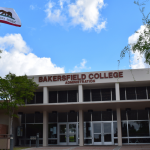As anyone in higher education can attest, the phrase “student experience” is found in every admissions booklet, Ed Tech vendor pitch, and school retention strategy. That’s because offering a positive experience is vital to attracting, enrolling, and retaining students, especially in today’s environment.
Enrollment numbers are declining partly because of changing demographics and economic pressures, but also because students are less engaged and dissatisfied with their college experiences. Take into account the following statistics:
- Student satisfaction at public universities is down by double digits. At this time, only 52% of students at public 4-year institutions and 53% of students at private 4-year institutions report they’re satisfied with their university
- Student willingness to recommend their school to friends has taken a nosedive since 2019, declining by 30%
- Students’ sense of comfort and belonging has also declined by 12% since 2022
While schools are not able to necessarily change some of the macro challenges they face around enrollment, they can address the student experience. But what exactly defines it, and how does improving it lead to better results?
Student Experience: Defined
A buzzword across campuses, “student experience” is generally thought to encapsulate all aspects of life for students. While that includes the obvious – academic studies, housing, extracurriculars, and social engagements – it’s increasingly representative of students’ mental well-being, feeling of belonging, and overall connection to their school and community.
While schools measure the student experience in various ways, from surveys and backend data analysis to in-person focus groups on campus, enrollment and retention numbers are the most telling metric of a positive student experience or a negative one.
It’s simple: if students perceive a college or university as providing an excellent experience, they are more likely to apply and enroll. In the same way, enrolled students with a positive experience are more likely to stay.
Improving the Student Experience Improves Enrollment
There are many ways to think about the student experience and how to improve it. But in every instance, making it better will lead to results on the enrollment and retention side. Consider, for example:
1: Offering a more flexible hybrid learning environment:
A recent EDUCAUSE report noted that students’ preferences have shifted to online options, and even those who prefer fully face-to-face courses are looking for online resources and activities.
When higher education institutions offer a hybrid learning environment, they allow students to pursue their education in the optimal manner for their individual journey. And when students’ individual needs are met, they are more apt to be successful and engaged, both academically and socially.
2: Better supporting mental health needs
The American Council for Education found students with poor mental health are at risk of a lower GPA, discontinued enrollment, or dropping out. Research shows 64% of students drop out of college because of mental health problems.
Imagine recapturing those students and keeping them healthy and enrolled. Whether it’s offering more on-campus counseling options, investing in additional mental health-focused programming, or putting more resources behind making students aware of the available services, schools can look at ways to support student mental health better and increase their success.
3: More effectively communicating financial aid opportunities for at-risk students
According to the U.S. Department of Housing and Urban Development, many students drop out of college due to financial insecurity. Research shows that “students who lack sufficient financial aid are more likely to work more hours or forego key resources like textbooks, affecting their ability to succeed in school.”
By making aid application information more readily accessible to at-risk students, schools can help address these challenges and get them the financial support they need to keep them enrolled.
4: Create a sense of belonging through improved engagement
Perhaps unsurprisingly, research shows a link between student engagement and retention. Engagement is a crucial part of the student experience, and students who feel supported and aware of their institutions’ services are more successful. For example, helping students attend advisory meetings is one way schools can keep them enrolled.
A recent Gallup study found that “students who are aware of academic advising are more likely to feel like they belong, feel confident they’re going to pass courses this term and feel confident they’re on track to graduate, compared to their peers who are not aware of academic advising.”
A great student experience is not one-size-fits-all
Attracting, enrolling, and retaining students starts and ends with understanding what students want and need to make their individual experience a positive one. Higher ed is facing significant challenges with enrollment. The good news? They can control one of those challenges – negative student experiences.
Ready to start improving the student experience? Let us help!















